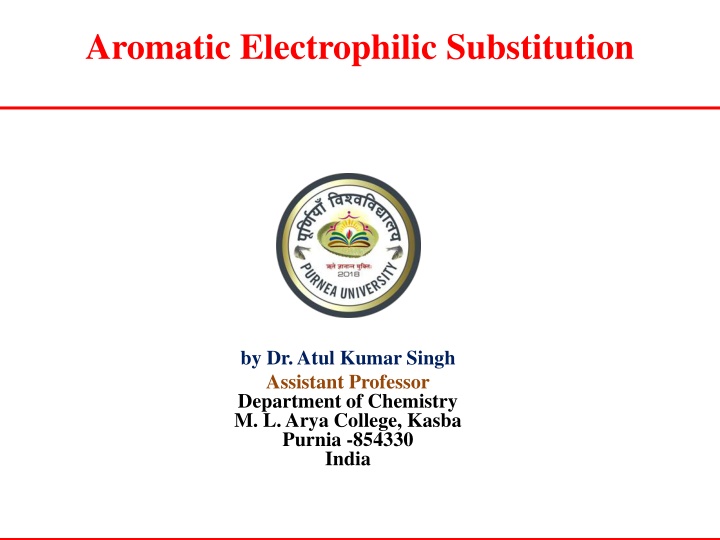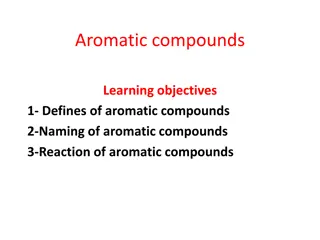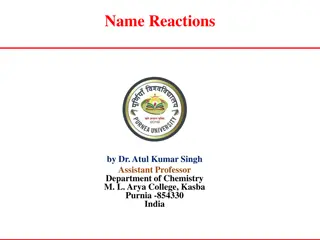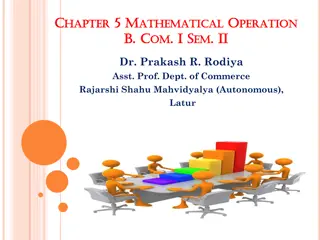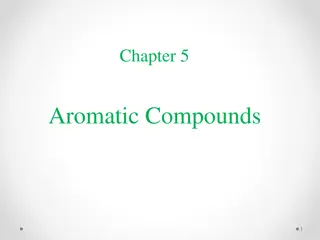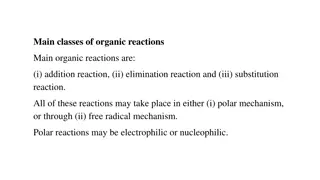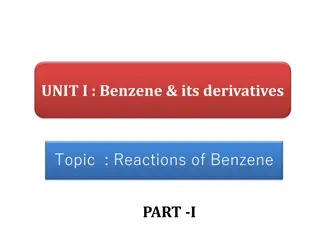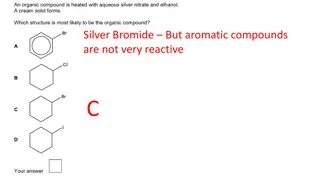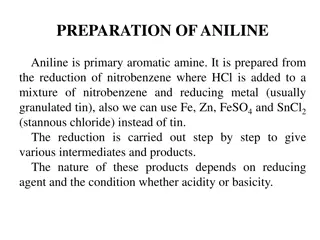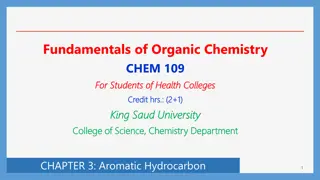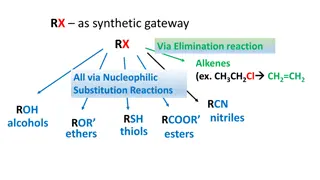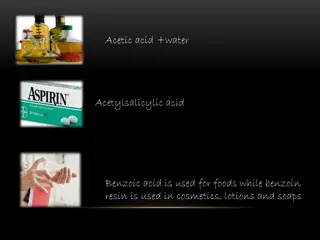Aromatic Nucleophilic Substitution Mechanisms
Aromatic nucleophilic substitution reactions are explored through SNAr, SN1, and benzyne mechanisms. Learn about the reactivity trends and evidence supporting these mechanisms in various reactions involving aryl halides. These mechanisms shed light on the role of electron-withdrawing groups and halogen electronegativity in the substitution process.
Download Presentation

Please find below an Image/Link to download the presentation.
The content on the website is provided AS IS for your information and personal use only. It may not be sold, licensed, or shared on other websites without obtaining consent from the author.If you encounter any issues during the download, it is possible that the publisher has removed the file from their server.
You are allowed to download the files provided on this website for personal or commercial use, subject to the condition that they are used lawfully. All files are the property of their respective owners.
The content on the website is provided AS IS for your information and personal use only. It may not be sold, licensed, or shared on other websites without obtaining consent from the author.
E N D
Presentation Transcript
Aromatic Electrophilic Substitution by Dr. Atul Kumar Singh Assistant Professor Department of Chemistry M. L. Arya College, Kasba Purnia -854330 India
Arenium Ion Mechanism for Aromatic Electrophilic Substitution Aromatic Electrophilic Substitution is bimolecular. Aromatic Electrophilic Substitution involves arenium ion intermediate. Mechanism involves two main key step : (i) formation of arenium ion and (ii) deprotonation. The first step is rate determining and the reaction follows second order kinetics.
Halogenation Introduction of an halogen into an aromatic ring in the presence of lewis acid and halogen is known as halogenation of arenes. Commonly used Lewis acid are FeCl3, FeBr3, AlCl3, AlBr3, etc
This method is restricted to Chlorination or bromination I or F are usually introduced in arenes by using alternative methods. The reactive electrophile, the halonium ion is formed by the removal of the halide by lewis acid catalyst. Some time iron is used in place of FeCl3 or FeBr3 but the active catalyst is not Fe(0) but FeCl3 or FeBr3 formed by the reaction of Fe and halogen
